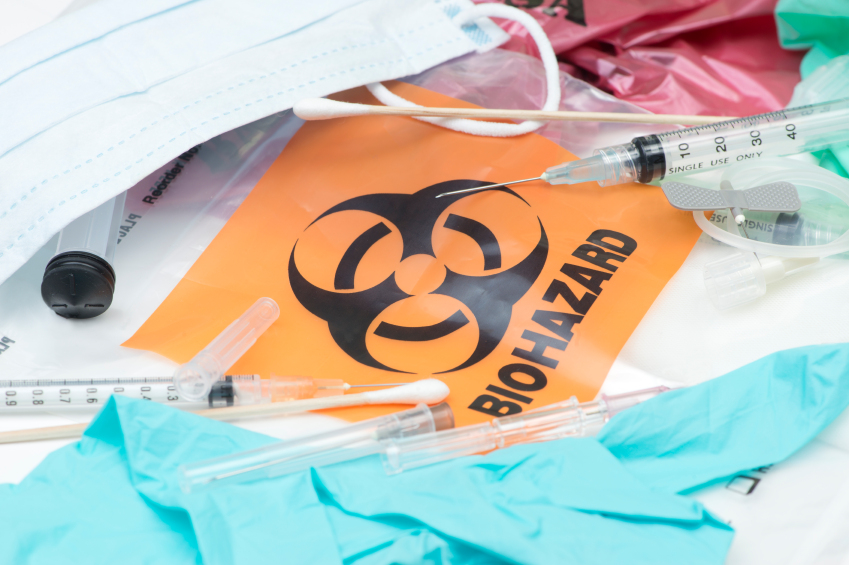In any environment where hazardous waste is present and must be disposed of, there are issues of waste segregation, storage, and disposal that must be addressed. In a medical environment, those issues are even more complex because of the presence of biohazardous and radioactive waste.
 |
In order to minimize costs, environmental impact, and risk to workers, proper classification of wastes is essential in a medical environment.
Sorting and Categorizing
Disposal methods for waste depend on the hazards to workers and to the environment that various waste products pose. It’s important to segregate these wastes from one another:
- Nonhazardous waste. A lot of the waste generated in a medical environment is not hazardous. Food waste, packaging waste, paper and other office waste, and similar nonhazardous waste must be segregated from hazardous waste. Storing and disposing of this waste as nonhazardous is less expensive for the facility, and it leaves hazardous waste landfill or incinerator capacity for wastes that genuinely require specialized disposal for safety and environmental protection reasons.
- Hazardous waste. Waste that is ignitable, corrosive, reactive, or toxic in accordance with the definitions found in the Resource Conservation and Recovery Act (RCRA) or that is listed by RCRA as hazardous is classified as hazardous waste. This includes hazardous chemical wastes, like solvents and batteries, and some pharmaceutical wastes, such as nicotine or Warfarin. These wastes must be disposed of in accordance with RCRA requirements.
- Low-level radioactive waste. Radioactive isotopes are sometimes used in a medical environment for diagnostic procedures and treatment. These radioactive materials can contaminate other items in the medical environment, including clothing, cleaning rags and mops, disposable medical equipment such as injection needles and syringes, and biological wastes like excrement, pathology samples, and the tissues of experimental animals. Materials contaminated with radioactivity must be classified as low-level radioactive waste, which is subject to specific storage and disposal requirements. Storage and disposal of radioactive waste may be regulated by the Nuclear Regulatory Commission (NRC), the Occupational Safety and Health Administration (OSHA), and state agencies, depending on the specific type of waste and whether the state operates an independent NRC or OSHA program.
- Regulated medical waste. Also called infectious waste, biohazardous waste, or medical waste, wastes in this category are potentially infectious because they have been contaminated with blood or other potentially infectious materials. The regulation of medical wastes falls to states rather than the federal government, so rules vary. Regulated medical wastes typically include:
- Any waste contaminated with blood or potentially infectious bodily fluids;
- Used sharps, such as needles, glass, scalpels, surgical instruments, and lancets;
- Isolation wastes, which are the excreted bodily wastes of individuals who are kept in isolation because they have a highly infectious disease;
- Chemotherapeutic wastes, which may also fall into the “waste mixtures” category;
- Pathology waste, such as surgery specimens, tissues, and removed body parts (limbs or organs such as tonsils or appendixes);
- Laboratory wastes, such as cultures, stocks, swabs, or culture dishes; and
- Veterinary wastes, including animal carcasses and body parts and animal bedding.
- Waste mixtures. Some wastes will fall into more than one category. For example, tissues contaminated with radioactive material may be both low-level radioactive waste and regulated medical waste. Or a patient’s treatment may generate waste that is regulated medical waste and contaminated with chemotherapy agents listed as RCRA-hazardous. Storage and disposal of waste mixtures must address all categories into which a waste falls.
Tomorrow, we’ll look at some storage requirements that apply to wastes in a medical environment.
